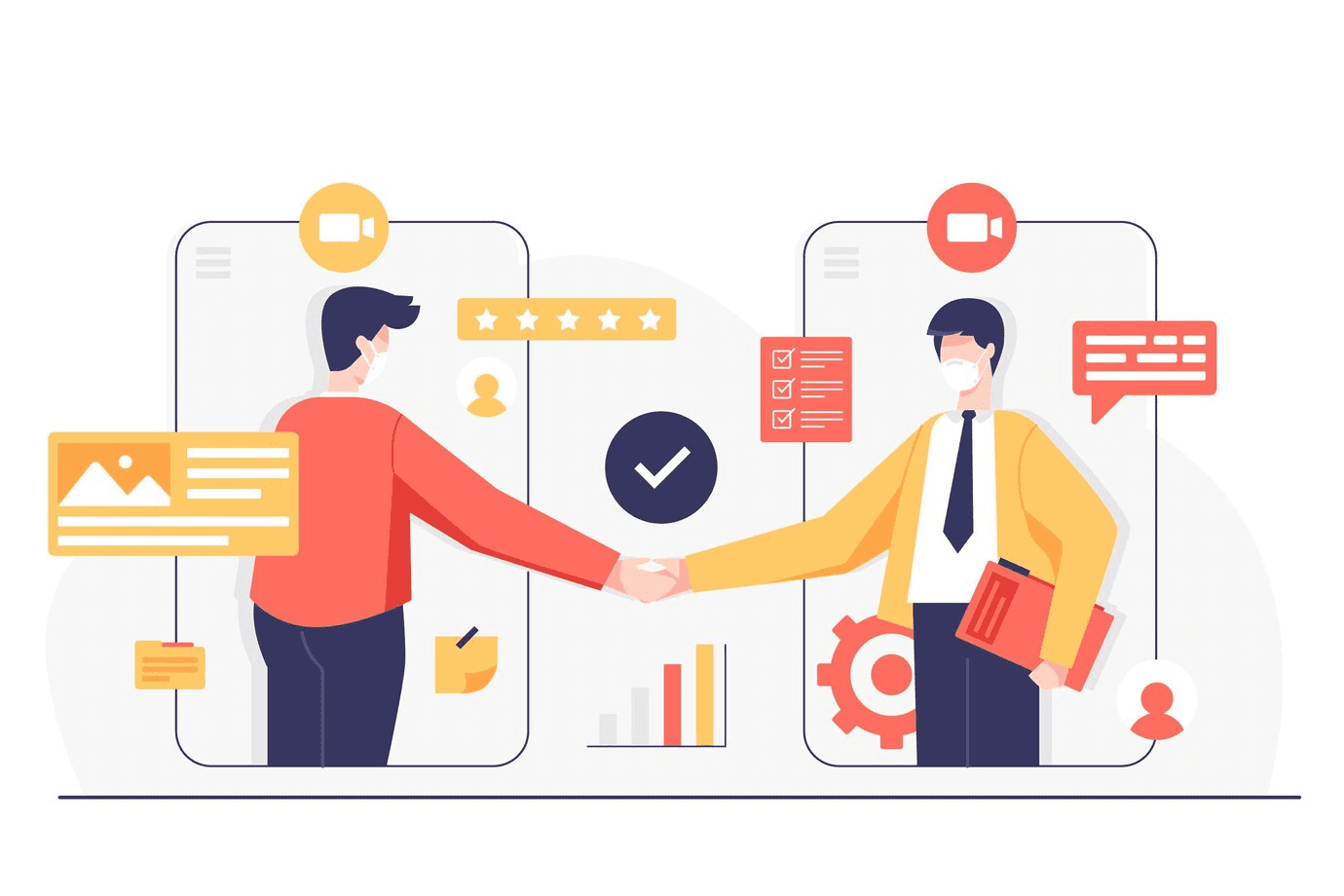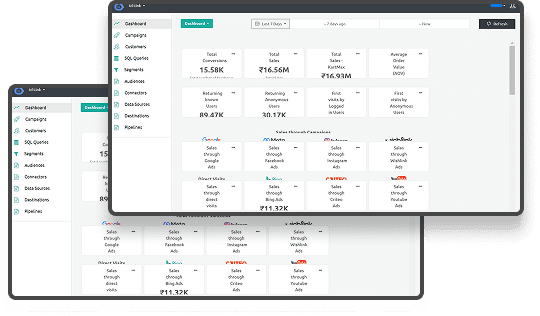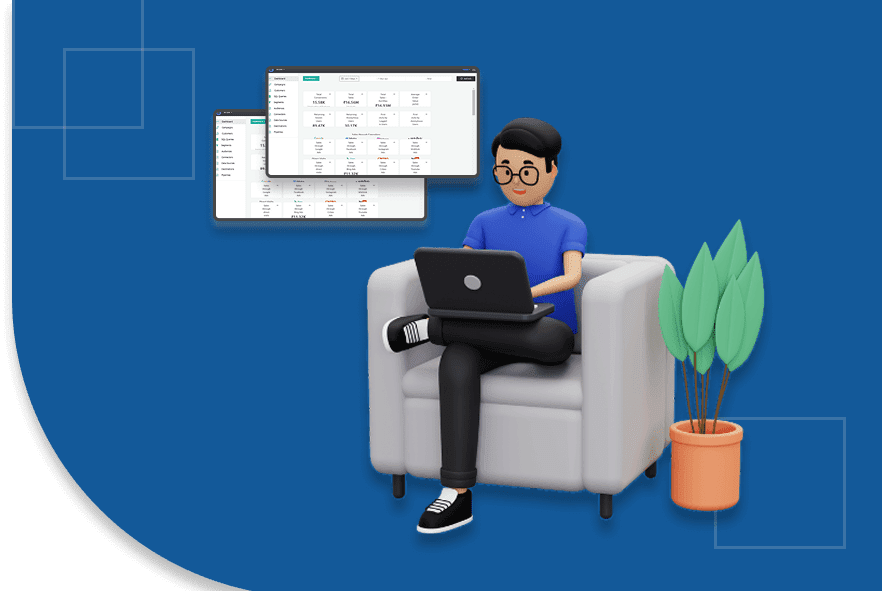Effective Customer Acquisition Strategies and Techniques
Looking for ways to attract more customers? These simple acquisition techniques can help!
Customer acquisition is the process of attracting and converting new buyers, and it plays a crucial role in sustaining a business's long-term profitability. Without a steady flow of new customers, even the best products or services may struggle to achieve their full potential.
In this blog, we’ll explore effective customer acquisition strategies and techniques that can help you expand your customer base.
Now that we know what customer acquisition means, let’s look at how it works for your business.
What is Customer Acquisition?
Customer acquisition refers to the process of converting potential customers into actual buyers. This process involves various stages of marketing and sales efforts, such as attracting prospects, nurturing leads, and finally converting them into paying customers. Essentially, it’s all about finding new customers and convincing them that your product or service meets their needs.
Many businesses use a mix of strategies to achieve customer acquisition—from digital ads and SEO to email marketing and social media. The goal is to build awareness, generate interest, and ultimately drive conversions that contribute to revenue growth.
Next, let’s explore why customer acquisition is so important for your business.
Why is Customer Acquisition Important?
Customer acquisition is not just about increasing your numbers—it’s about building a strong foundation for growth. Here are some reasons why effective customer acquisition is critical for your business:
- Revenue Growth:
New customers bring additional revenue and help expand your market share. If your acquisition costs are lower than each new customer's revenue, your business can grow profitably. - Sustainable Business Development:
A consistent influx of new customers means your business isn’t solely relying on existing ones, reducing risk and fostering long-term sustainability. - Market Expansion:
Successful customer acquisition strategies allow you to tap into new market segments and demographics, expanding your brand’s reach and impact. - Competitive Advantage:
In competitive markets, attracting new customers can set you apart from competitors. Innovative acquisition strategies can help you capture market share and build a loyal customer base. - Optimized Marketing Efforts:
By tracking and analyzing customer acquisition metrics—like customer acquisition cost (CAC) and customer lifetime value (CLTV)—you can make smarter decisions about where to invest your marketing budget. For insights into tracking and optimizing conversions, consider reading Understanding and Optimizing Conversion Funnels in Digital Marketing.
Now that we understand the importance, let’s walk through the steps involved in acquiring new customers.
Customer Acquisition Process
A well-defined customer acquisition process is critical to turning potential leads into paying customers. This process involves several key steps:
- Setting Clear Marketing Goals:
Define what you want to achieve with your acquisition efforts. These goals might include increasing website traffic, generating leads, boosting sales, or improving brand awareness. Clear goals help align your marketing strategies with your overall business objectives. - Collecting and Analyzing Data:
Gather relevant customer data from various sources such as your website, social media, email campaigns, and CRM systems. Analyze this data to understand customer behavior, preferences, and pain points. - Segmenting Your Audience:
Divide your potential customers into groups based on demographics, behaviors, or interests. Segmentation allows you to craft personalized messages and target specific groups more effectively. This step is critical for tailoring your marketing efforts and ensuring that each campaign speaks directly to its intended audience. - Developing Targeted Campaigns:
Use the insights gained from data analysis and audience segmentation to design and launch marketing campaigns. These campaigns should address the specific needs and interests of each audience segment, whether through content marketing, social media engagement, or paid advertising. - Tracking and Optimizing Campaigns:
Monitor your campaigns closely and measure performance using key metrics such as conversion rates, customer acquisition cost, and return on investment (ROI). Based on these insights, continuously optimize your campaigns to improve results over time. - Reviewing and Refining the Process:
The customer acquisition process should be iterative. Regularly review your strategies and performance data, make adjustments, and test new approaches to keep your acquisition efforts effective and efficient.
Let’s now look at some simple strategies you can use to attract more customers.
Effective Strategies and Techniques for Customer Acquisition
Now that we’ve established just how crucial customer acquisition is for the growth and sustainability of your business, it’s time to look into some proven strategies that can help you attract and retain new customers.
1. Inbound Marketing
Inbound marketing focuses on attracting customers through valuable content and experiences tailored to them. Instead of pushing your products, you create helpful content that draws customers in organically. Here are some techniques under inbound marketing:
- Content Marketing:
Create blog posts, videos, infographics, and eBooks that address the needs and pain points of your target audience. For example, writing about industry trends or how-to guides not only helps customers but also improves your website’s SEO. When you produce high-quality content, potential customers discover your brand through search engines and social media. - Search Engine Optimization (SEO):
Optimize your website content for search engines to ensure your business appears at the top of search results. This includes using relevant keywords, such as “customer acquisition,” and ensuring that your website’s meta tags and descriptions are optimized, as discussed in Understanding the Importance of Meta Tags and Tags for SEO on Your Website. - Social Media Engagement:
Use social media platforms to share your content and engage with your audience. Respond to comments, participate in discussions, and build relationships with potential customers. Engaging content that resonates with your audience encourages them to learn more about your offerings.
2. Outbound Marketing
While inbound marketing attracts customers by offering value, outbound marketing proactively reaches out to potential customers. Here are some effective outbound techniques:
- Email Marketing:
Build a list of potential customers and send targeted emails that introduce your products or services. Personalization is key; tailor your messages based on the recipient’s interests and behaviors. You might share case studies, special offers, or new product announcements. Data from email campaigns can be integrated with insights from How Ethical Data Collection Builds Trust and Fuels Business Growth for more effective messaging. - Cold Calling and Direct Mail:
Though often seen as traditional methods, cold calling and direct mail can still be effective, especially for B2B businesses. These methods work best when combined with thorough research and personalization. - Paid Advertising:
Use platforms like Google Ads and Facebook Ads to target potential customers with paid search or display ads. Paid campaigns can be highly effective if you invest in thorough research to understand your audience’s demographics and preferences.
3. Social Media Marketing
Social media platforms are powerful channels for reaching new customers. They allow you to interact directly with your audience, showcase your brand personality, and share engaging content. Key strategies include:
- Targeted Ads:
Platforms like Facebook offer robust targeting options that let you reach specific segments of your audience. With detailed demographic, behavioral, and interest-based targeting, you can ensure that your ads are seen by potential customers who are most likely to convert. This is especially useful when running Facebook retargeting campaigns, as discussed in Complete Guide to Facebook Retargeting Strategies. - Engagement and Community Building:
Engage with your audience through posts, comments, live sessions, and groups. Building a community around your brand not only increases loyalty but also attracts new customers through word-of-mouth and organic sharing. - Influencer Collaborations:
Partner with influencers in your industry to reach a broader audience. Influencers can lend credibility to your brand and introduce your products to their loyal followers.
4. Referral Programs
Referral programs encourage your existing customers to refer new customers to your business. When customers have a positive experience, they are often willing to share it with friends and family. Offering incentives, such as discounts or rewards, can motivate your customers to become advocates for your brand. This organic approach not only helps in acquiring new customers but also builds trust, as referrals come from trusted sources.
5. Retargeting and Remarketing
Retargeting involves serving ads to users who have already interacted with your brand but haven’t converted. For example, suppose a customer visits your website and views a product without purchasing. In that case, you can use retargeting ads to remind them of the product and encourage them to complete their purchase.
- Dynamic Ads:
Use dynamic retargeting ads that display products a user has viewed. These ads are highly effective because they show exactly what the customer was interested in, increasing the likelihood of conversion. - Cross-Channel Retargeting:
Combine retargeting efforts across multiple platforms, including Google and social media, to reinforce your message and reach customers wherever they are online. Ingest Labs helps you track user behavior and optimize retargeting campaigns across channels, similar to the insights found in Track the Customer Journey Across Multiple Channels with Ingest Labs.
6. Personalization and Optimization
Personalization is key to converting potential customers. Use data from various touchpoints to personalize your marketing messages, offers, and content. Personalization can range from addressing customers by name in emails to showing them products based on their browsing history. The more tailored your marketing is, the more likely customers are to respond positively.
- A/B Testing:
Continuously test different elements of your campaigns—such as ad copy, CTAs, and visuals—to determine what resonates best with your audience. Use the data from these tests to refine your strategies and improve conversion rates over time. - Dynamic Content:
Incorporate dynamic content in your ads and emails that adjusts based on the customer’s behavior. This ensures that every interaction feels personalized and relevant.
To make these strategies work, you need the right tools. Let’s see which ones can help.
Tools and Technologies for Customer Acquisition
To successfully implement these strategies, leveraging the right tools is essential. Here are a few tools and technologies that can enhance your customer acquisition efforts:
- CRM Systems:
Customer Relationship Management systems help you manage customer interactions and data. They allow you to track customer behavior, segment your audience, and nurture leads through targeted communications. - Analytics Platforms:
Use platforms like Google Analytics to track website traffic, monitor campaign performance, and gather data on user behavior. This data is invaluable for understanding your audience and optimizing your marketing strategies. - Email Marketing Tools:
Tools such as Mailchimp or HubSpot can help you automate and personalize your email marketing campaigns. These platforms enable you to send targeted messages and track their performance. - Advertising Platforms:
Platforms like Google Ads and Facebook Ads provide robust targeting options, allowing you to reach your audience based on demographics, behavior, and interests. These platforms also offer detailed analytics to help you measure the effectiveness of your campaigns. - Data Management Platforms:
Tools like Ingest Labs integrate data from various sources, offering a unified view of your customer interactions. By leveraging real-time data, these platforms help you make data-driven decisions to optimize your customer acquisition strategies.
Here’s how Ingest Labs can make your customer acquisition process even easier and more effective.
Supercharge Your Customer Acquisition with Ingest Labs
One powerful tool that can elevate your customer acquisition strategies is Ingest Labs. This platform offers a comprehensive suite of features that make collecting, analysing, and acting on customer data easier. Here's how Ingest Labs can supercharge your customer acquisition efforts:
- Real-Time Data Tracking:
Ingest Labs collects data in real time from your website and marketing channels. This immediate insight allows you to understand customer behaviour and respond quickly to trends and issues. Real-time data ensures that you’re always working with the most current information to optimize your campaigns. - Dynamic Content Integration:
Ingest Labs supports dynamic content that can be automatically tailored to each customer based on their browsing and purchase history. This means your ads, emails, and landing pages can display content that is most relevant to the user, boosting engagement and conversion rates. - Seamless Integration:
The platform integrates with over 100+ marketing tools, creating a unified data ecosystem. This integration streamlines your marketing efforts by ensuring that all your customer data is connected and actionable, reducing friction and enabling smoother operations across campaigns. - Comprehensive Analytics:
With robust analytics and reporting, Ingest Labs provides deep insights into your customer acquisition performance. You can track metrics such as conversion rates, customer acquisition costs (CAC), and customer lifetime value (CLTV). This data allows you to refine your strategies and optimize your budget for maximum ROI.
For a deeper dive into data-driven strategies and the importance of unified tracking, consider exploring resources like Understanding and Optimizing Conversion Funnels in Digital Marketing and How Ethical Data Collection Builds Trust and Fuels Business Growth.
Conclusion
Effective customer acquisition is the backbone of any successful business. By combining inbound and outbound strategies, leveraging social media, optimizing content, and using targeted advertising, you can attract new customers and drive sustainable growth. The key to success lies in continually analyzing your customer data and refining your strategies based on actionable insights.
Ingest Labs make this process much more manageable. By providing real-time tracking, advanced segmentation, dynamic content integration, and comprehensive analytics, Ingest Labs empowers you to build data-driven customer acquisition strategies that deliver measurable results. Leveraging these insights not only helps you attract new customers but also enhances the overall efficiency of your marketing efforts.
Ready to supercharge your customer acquisition strategies and achieve better results? Contact us today to learn how Ingest Labs can help you turn data into growth.






